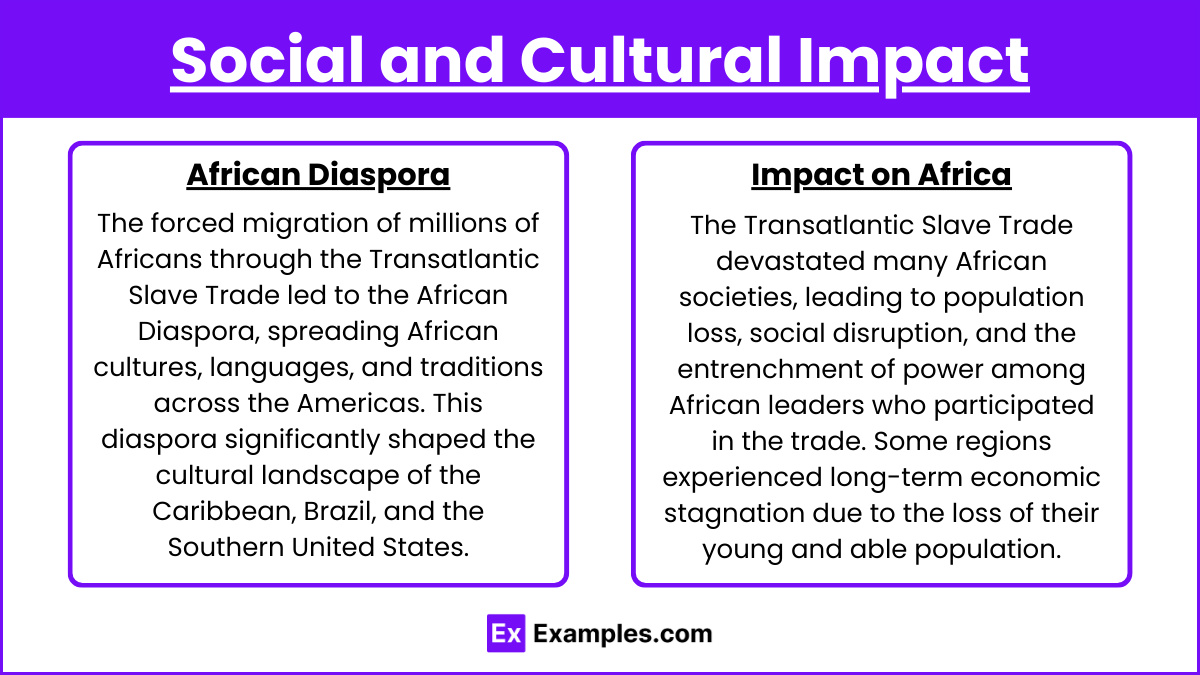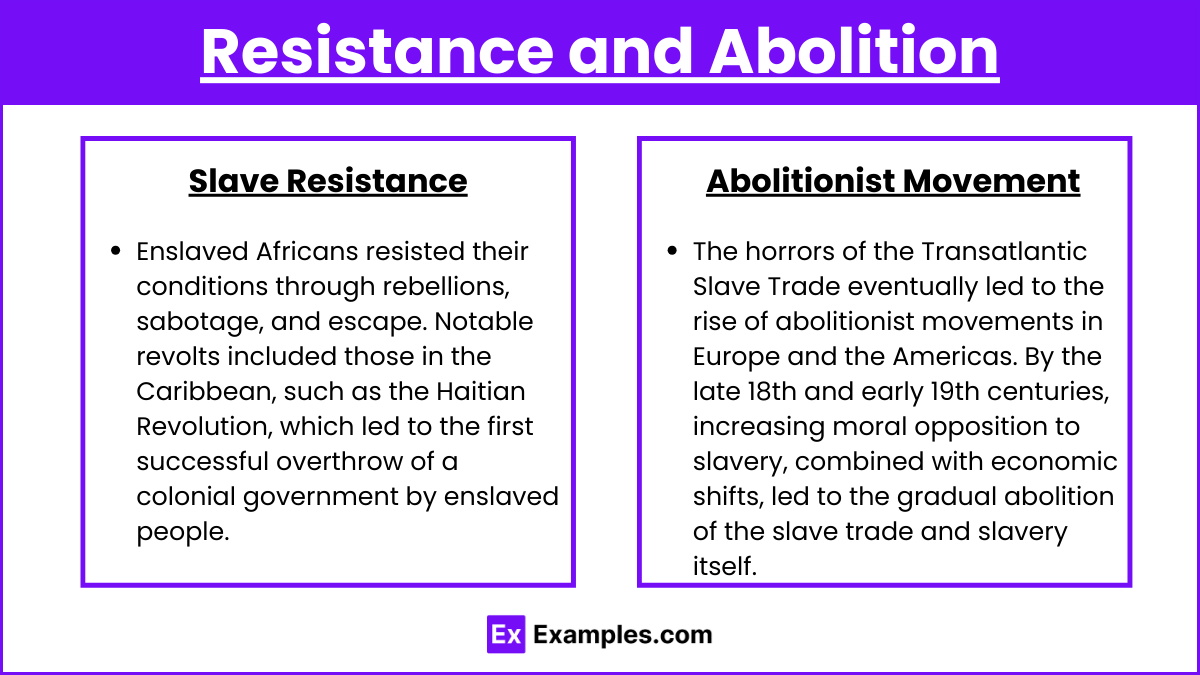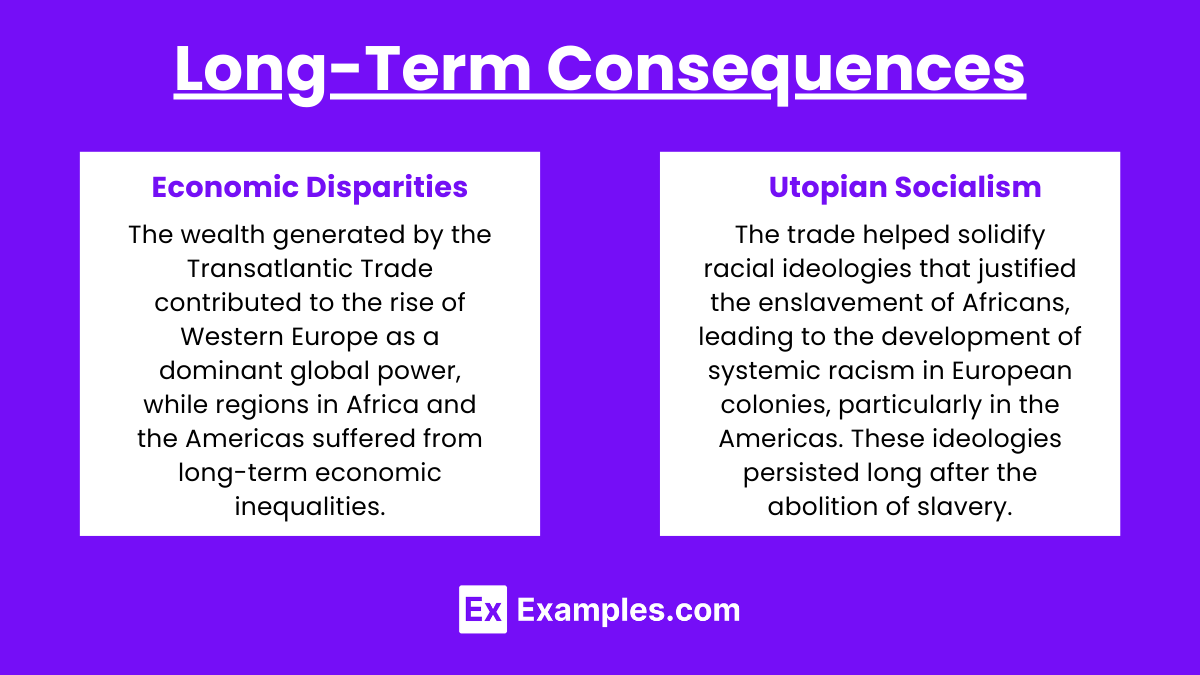In AP United States History, the Transatlantic Trade, also known as the Triangular Trade, is studied as a critical economic system that connected Europe, Africa, and the Americas from the 16th to the 19th centuries. This trade network involved the exchange of goods, enslaved Africans, and raw materials, playing a central role in the development of European colonial economies. The trade had profound social, cultural, and economic impacts, including the rise of the African Diaspora, the growth of European wealth, and the entrenchment of slavery in the Americas.
Free AP United States History Practice Test
Learning Objectives
In studying the Transatlantic Trade, you will be introduced to the key components of the triangular trade system connecting Europe, Africa, and the Americas. The economic motivations driving this trade and its profound impact on the development of colonial economies will be explored. You will examine the social and cultural consequences, including the African Diaspora and the entrenchment of slavery. Additionally, the long-term effects of the trade on global power dynamics and racial ideologies will be analyzed.
The Triangular Trade System

First Leg (Europe to Africa): European ships carried manufactured goods, such as guns, cloth, alcohol, and other items, to Africa. These goods were exchanged for enslaved Africans, who were captured through raids or bought from African rulers.
Second Leg (Africa to the Americas - The Middle Passage): The Middle Passage was the harrowing journey of enslaved Africans across the Atlantic to the Americas. This leg of the trade was notorious for its brutal conditions, with high mortality rates among the captives due to overcrowding, disease, and mistreatment.
Third Leg (Americas to Europe): Ships returned to Europe carrying raw materials from the colonies, such as sugar, tobacco, cotton, and rum. These products were essential to European economies and fueled further industrial growth.
Economic Impact

Colonial Economies: The Transatlantic Trade was crucial to the development of the colonial economies in the Americas, particularly in the Caribbean and Southern colonies, where plantation agriculture depended heavily on enslaved labor.
Mercantilism: European nations operated under the economic policy of mercantilism, where colonies existed to benefit the mother country. The Transatlantic Trade provided raw materials for European industries and markets for manufactured goods, reinforcing the mercantilist system.
Growth of European Ports: Ports such as Liverpool, Bristol, and Nantes thrived due to their involvement in the Transatlantic Trade. The wealth generated from this trade contributed to the economic growth and urbanization of these cities.
Social and Cultural Impact

African Diaspora: The forced migration of millions of Africans through the Transatlantic Slave Trade led to the African Diaspora, spreading African cultures, languages, and traditions across the Americas. This diaspora significantly shaped the cultural landscape of the Caribbean, Brazil, and the Southern United States.
Impact on Africa: The Transatlantic Slave Trade devastated many African societies, leading to population loss, social disruption, and the entrenchment of power among African leaders who participated in the trade. Some regions experienced long-term economic stagnation due to the loss of their young and able population.
Resistance and Abolition

Slave Resistance: Enslaved Africans resisted their conditions through rebellions, sabotage, and escape. Notable revolts included those in the Caribbean, such as the Haitian Revolution, which led to the first successful overthrow of a colonial government by enslaved people.
Abolitionist Movement: The horrors of the Transatlantic Slave Trade eventually led to the rise of abolitionist movements in Europe and the Americas. By the late 18th and early 19th centuries, increasing moral opposition to slavery, combined with economic shifts, led to the gradual abolition of the slave trade and slavery itself.
Long-Term Consequences

Economic Disparities: The wealth generated by the Transatlantic Trade contributed to the rise of Western Europe as a dominant global power, while regions in Africa and the Americas suffered from long-term economic inequalities.
Racial Ideologies: The trade helped solidify racial ideologies that justified the enslavement of Africans, leading to the development of systemic racism in European colonies, particularly in the Americas. These ideologies persisted long after the abolition of slavery.
Examples
The Middle Passage: The brutal voyage of enslaved Africans across the Atlantic Ocean, where they endured inhumane conditions. The high mortality rate and psychological trauma experienced by the captives were emblematic of the horrors of the Transatlantic Slave Trade.
Sugar Plantations in the Caribbean: Sugar production in colonies like Jamaica and Barbados was central to the Transatlantic Trade. These plantations relied heavily on enslaved African labor, producing immense wealth for European merchants and landowners.
The Port of Liverpool: Liverpool became one of Europe’s leading ports due to its involvement in the slave trade, with ships carrying goods to Africa, slaves to the Americas, and returning with sugar, tobacco, and cotton.
The Haitian Revolution (1791-1804): A successful slave revolt in the French colony of Saint-Domingue (now Haiti) that resulted in the abolition of slavery and the establishment of the first independent Black republic.
Abolition of the Slave Trade (1807): The British Parliament passed the Abolition of the Slave Trade Act in 1807, marking a significant step in ending the Transatlantic Slave Trade. This movement was fueled by growing moral opposition and economic changes.
Multiple Choice Questions (MCQs)
Which leg of the Transatlantic Trade was known as the Middle Passage?
A. Europe to Africa
B. Africa to the Americas
C. Americas to Europe
D. Africa to Europe
Answer: B
Explanation: The Middle Passage refers to the journey of enslaved Africans across the Atlantic Ocean to the Americas. This leg of the trade was notorious for its brutal conditions and high mortality rates.
Which European port became one of the leading centers of the Transatlantic Slave Trade?
A. Lisbon
B. Amsterdam
C. Liverpool
D. Venice
Answer: C
Explanation: Liverpool became a major center of the Transatlantic Slave Trade, with its economy heavily tied to the trade of goods, enslaved Africans, and raw materials between Europe, Africa, and the Americas.
What was a significant outcome of the Haitian Revolution?
A. Expansion of European colonization in the Caribbean
B. Establishment of the first independent Black republic
C. Revival of the Transatlantic Slave Trade
D. Strengthening of the French colonial empire
Answer: B
Explanation: The Haitian Revolution led to the establishment of the first independent Black republic, ending French colonial rule in Saint-Domingue and abolishing slavery on the island.

